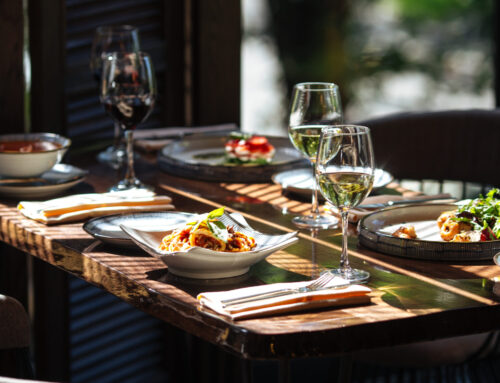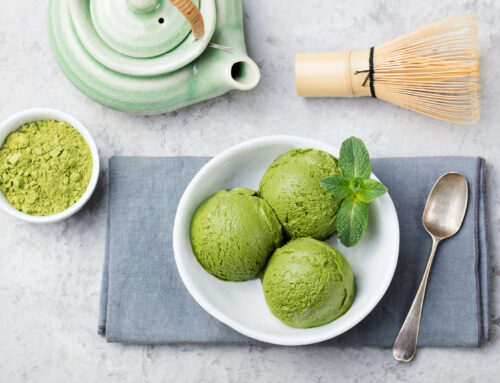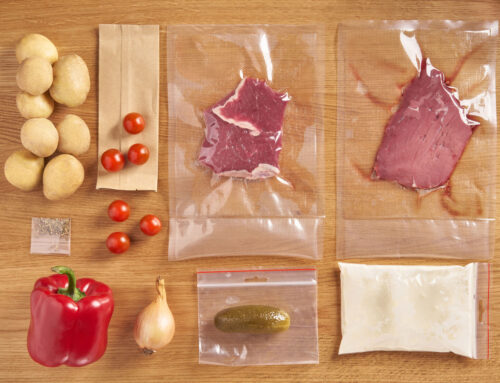The greatest luxuries in modern life are silence, time and real food. A dinner party is the ultimate chic event. While a host cannot provide an extra helping of hours in the day, they can provide the freshest sustenance and time well spent in their company. When hosting a dinner party, guests will expect you to be at the top of your game with planning and preparation. Every single detail must be considered and fit in with the themes of the evening’s affair. You may serve traditional dishes or ones that have a fusion bent, but presentation is key. Read on to learn how to host a gourmet dinner party that will be the event of the season. Want to complement your dinner party with stunning views of land or sea? Start your journey by visiting the Distinctive Collection by Better Homes and Gardens® Real Estate.
Pick a familiar theme
Party planning must always start with creating a theme. A dinner event centers on food and must be carefully considered. Start with country or regional specialties. Italian is always a top choice, as are French or Spanish food. Guests generally would prefer to eat what they know. If planning on offering unexpected pairings, such as an apple and jalapeno chutney, it might be best to present them as side dishes to avoid leaving guests with the impression that they have nothing to eat. Themes can center on times of the year. A Mardi Gras celebration, fetes to honor equinoxes, or a Valentine’s Day love letter to food will allow guests to know which gifts to bring and a general sense of the foods they will be eating. Even better is to…
Allow the seasons to lead the way
Nature was designed to give the spotlight to certain fruits and vegetables during certain times of the year. Truffles and fresh olive oil are the stars of November while artichokes have to wait until March for their day in the sun. Dinner parties should be a rite of passion dedicated to in-season delicacies. Commit to using locally grown foods that will demonstrate your eco-consciousness and give your feast the opportunity to be remembered for how fresh everything was.
Décor
How you decorate your table sets the tone for the courses to come. Lay down your finest tablecloth and bring out real plates, glasses and silver. Guests should see you are giving them a genuine encounter to expand their joy of living. Centerpieces should also be of the season. Rather than using seasonal blooms, arrange herbs such as oregano, thyme, rosemary and lavender in a pleasing display. Take care not to use scented candles that detract from the meal. Votive candles create a welcoming atmosphere, as do taper candles. Light the way to your meal with lanterns placed on the porch, in the foyer or on garden paths to instill a sense of culinary adventure.
Do not pass to your left
Each course should be distinct. Traditional French feasts have nine courses: cold hors d’oeuvre, soup, fish or seafood, the entrée, cold dish or salad, cheese, dessert, fruit, and coffee. Some hosts forego formality by only serving an appetizer, the entrée and dessert. The number, of course, is up to you. Guests should not fill up on the appetizer to leave the entrée on their cooling plates. Instead, serve each course by itself. Guests should have their plates served by someone who is aware that the flavors of the varying courses are not to be mixed. Separate dishes to honor the refined palates of your guests. There should be no passing of plates to ensure that the aromas are not blending and hiding the beauty of your carefully prepared meal.
Have a symposium
Conversation is second only to the food at a dinner party. Encourage guests to turn off their phones, or collect them in a basket to ensure everyone is fully present. Once everyone is done eating, introduce a topic of general interest. Given the leanings and personalities of your guests some topics, such as politics and religion, should be avoided. Ask guests to share their opinion, honoring those that are abstaining, and create a discussion where your attendees feel that their opinion is being honored.
Follow up
Guests who were thoughtful enough to bring a gift should be recognized with a handwritten thank you card. The general rule is that cards should be postmarked no more than three days after receiving the gesture. Make sure to specify why their gift was so fitting for the occasion and your future uses for it. Of course, if the gift consisted of edibles, show your gratitude by expressing how much you enjoyed each bite. In return, guests will take on even more favorable feelings toward your party and RSVP gladly for future ones.
Share the joy of being alive with a gourmet dinner party that will leave a pleasant taste for years afterward. Want to complement your dinner party with stunning views of land or sea? Start your journey by visiting the Distinctive Collection by Better Homes and Gardens® Real Estate.








